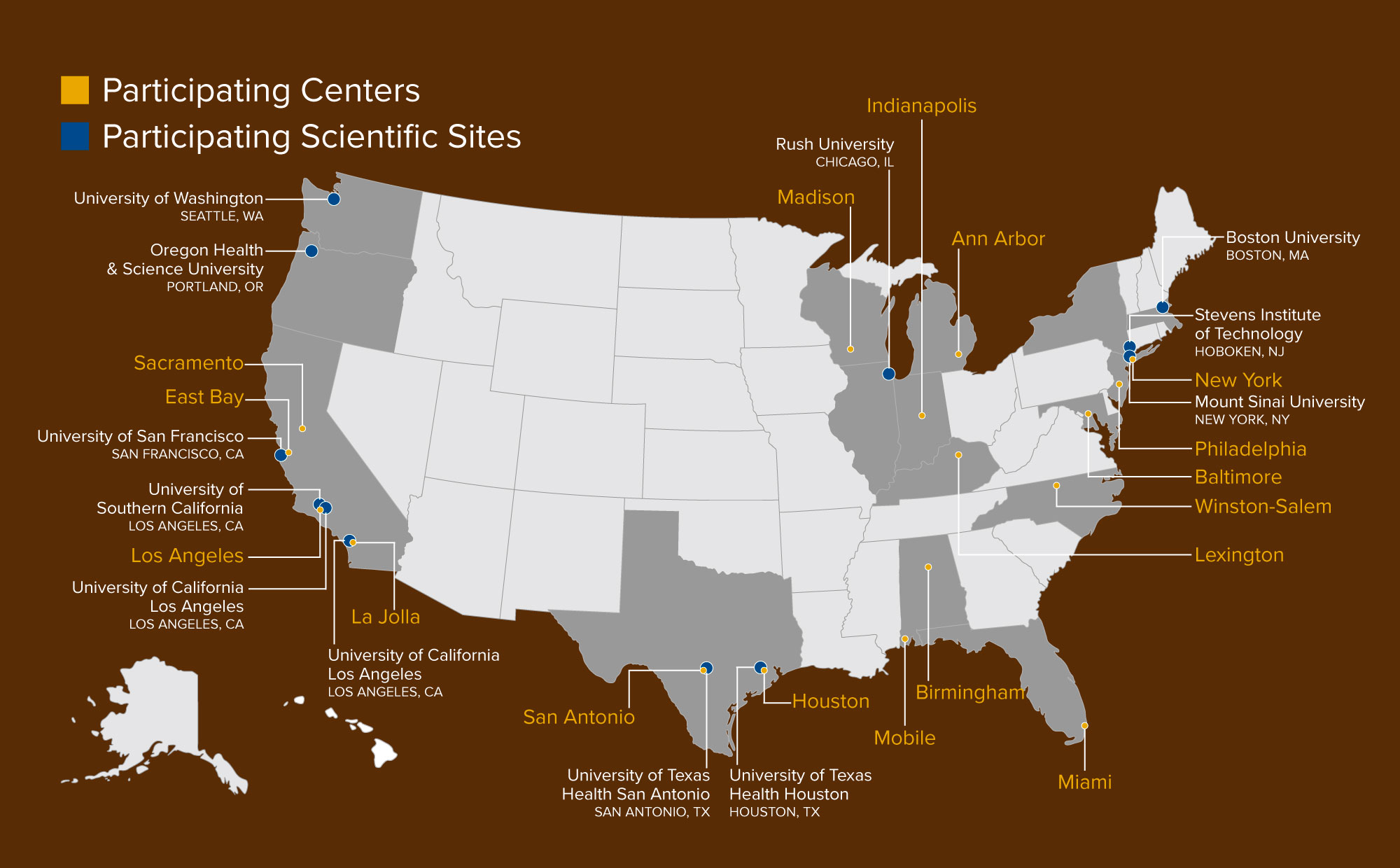About the Study
This is a 5-year observational study that involves clinical examination, clinical diagnosis, neuropsychological testing, MRI and blood sampling at 3 visits over three years among 2,250 participants with cognitive complaints.
Cerebrovascular Measures
- White matter hyperintensities
- Free Water
- Fractional Anisotropy
- White Matter Hyperintensities
- Cerebral Microbleeds
- Incident MR infarcts
Hypothesized Causal Factors
- Age
- Vascular Risk Factors
- Concurrent vascular disease
- AD pathology
- WMH Genetics
Outcomes
- Change in cognition
- Change in diagnosis
- Stroke/MI/Death
Sites

Research amplifies existing Alzheimer's Disease Research Centers (ADRC)
- Each ADRC selected has a track record of successful recruitment of African American, Hispanic/Latino American and White/European American participants
- Emphasizes existing participants
- Efficient - no duplicated effort for clinical cores
- Supplements existing data collection
- Supplements existing recruitment efforts
- Pays for blood samples, DNA sampling and advanced Magnetic Resonance Imaging
Returns plasma ATN, AD/VCID genetic risk scores, quantitative MRI results
By using an existing and mature research infrastructure we can most efficiently implement large scale research of Vascular Contributions to Cognitive Impairment and Dementia.
